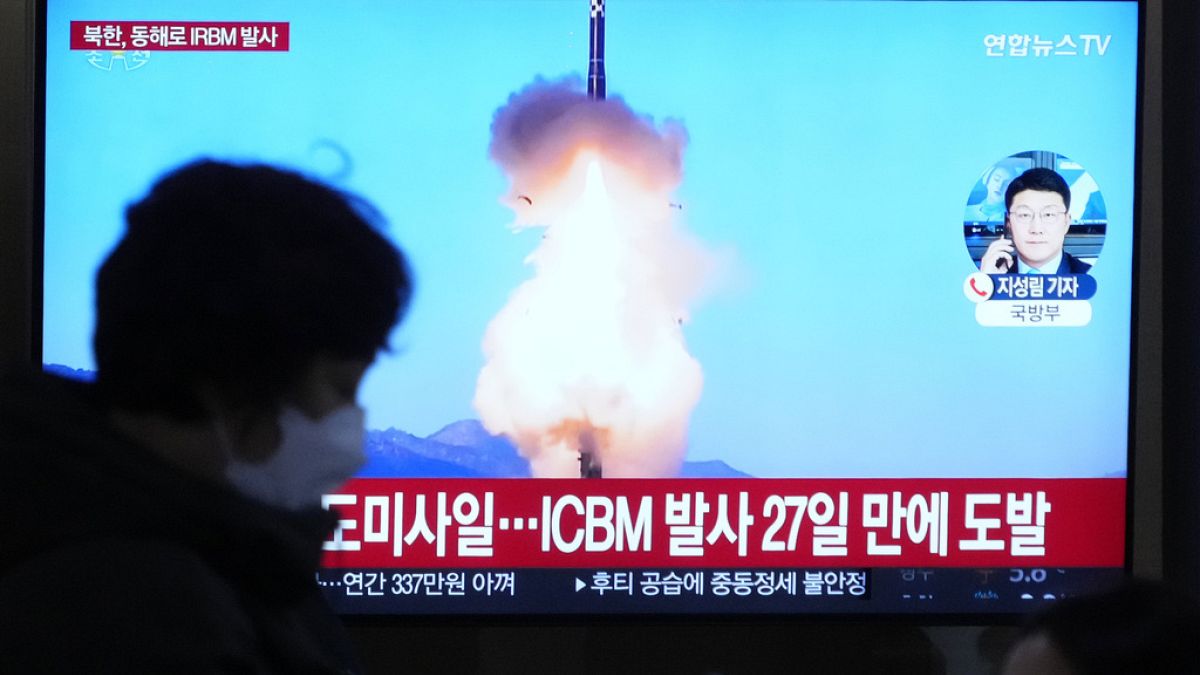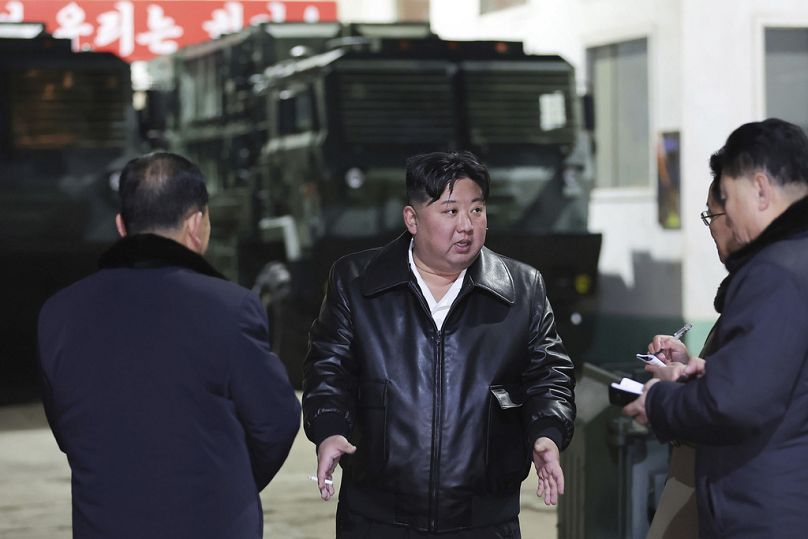It’s thought that the Asian nation’s new weapons will be able to reach distant US bases.
North Korea fired a suspected intermediate-range ballistic missile into the sea on Sunday, South Korea's military said, two months after they claimed to have tested engines for a new harder-to-detect missile capable of striking distant US targets in the region.
The launch was North Korea's first this year. Experts say they could ramp up its provocative missile tests as a way to influence the results of South Korea's parliamentary elections in April and the US presidential election in November.
South Korea's Joint Chiefs of Staff said in a statement that it detected the launch of a ballistic missile of an intermediate-range class from their capital region on Sunday afternoon. It said the missile flew about 1,000 kilometres (620 miles) before landing in the waters between the Korean Peninsula and Japan.
The Joint Chiefs of Staff called the launch a provocation that poses a serious threat to peace on the Korean Peninsula. It said South Korea's military will maintain its readiness to overwhelmingly respond to any provocations by North Korea.
The South Korean assessment suggests North Korea could have launched a new intermediate-range ballistic missile, whose solid-fuel engine it said it had tested in mid-November.
The missile is mainly designed to hit US military bases in the US Pacific territory of Guam, which is about 3,400 kilometres (2,110 miles) from Pyongyang, the capital. With a range adjustment, the missile can also be used to attack closer targets - including the US military installations in Japan's Okinawa island, according to Chang Young-keun, a missile expert at the Korea Research Institute for National Strategy in Seoul.
Built-in solid propellants make missile launches harder to detect than liquid-fueled missiles, which must be fueled before launch and cannot last long. North Korea has a growing arsenal of solid-fuel short-range missiles targeting South Korea, but its existing Hwasong-12 intermediate-range missile is powered by liquid-fuel engines.
Japan's Defense Ministry said its analysis showed the missile travelled at least 500 kilometres (300 miles) at the maximum altitude of 50 kilometres (30 miles), data that suggest North Korea may have fired a short-range and not an intermediate-range missile.
Japan and South Korea said they closely exchanged information about the launch with the United States, but they didn't immediately explain the discrepancy in data.
The last time North Korea performed a missile launch that was publicly announced was Dec. 18, when it test-fired its Hwasong-18 solid-fueled intercontinental ballistic missile, their most advanced weapon. The Hwasong-18 is the country's only known solid-fuel ICBM and it's designed to strike the mainland US.
On 5 January, North Korea fired a barrage of artillery shells near the disputed western sea boundary with South Korea, prompting South Korea to conduct similar firing exercises in the same area. South Korea accused North Korea of continuing similar artillery barrage in the area for the next two days. The site is where the navies of the two Koreas have fought three bloody sea battles since 1999 - and attacks blamed on North Korea killed 50 South Koreans in 2010.
In recent days, North Korea has also been escalating its warlike, inflammatory rhetoric against its foes ahead of an election year in South Korea and the US Leader Kim Jong Un, during visits last week to munitions factories, called South Korea “our principal enemy” and threatened to annihilate it if provoked.
Experts say Kim likely wants to see South Korean liberals win the election and pursue rapprochement with North Korea, and for former US President Donald Trump to be elected again. They say Kim may believe he could win US concessions like sanctions relief if Trump returns to the White House.
Negotiations over North Korea’s advancing nuclear arsenal have been dormant since the Kim-Trump diplomacy broke down in 2019. Kim has since focused on enlarging his nuclear and missile arsenals in what foreign analysts say is an effort to boost his leverage. In recent months, North Korea has also been expanding its military and other cooperation with Russia.
The US government said it has evidence that missiles provided by North Korea to Russia had been used in the war in Ukraine. In a joint statement last week, the US, South Korea and their partners said the missile transfer supports Russia's war of aggression and provides North Korea with valuable technical and military insights.
North Korea and Russia announced Sunday that North Korean Foreign Minister Choe Son Hui will visit Russia from Monday to Wednesday at the invitation of her Russian counterpart Sergey Lavrov.

